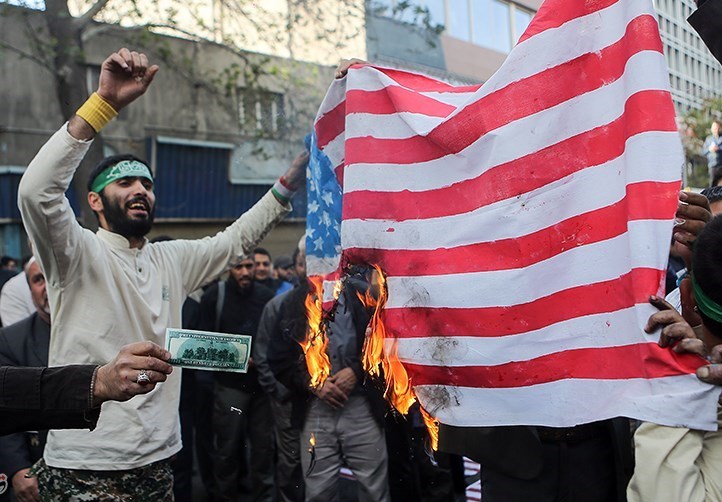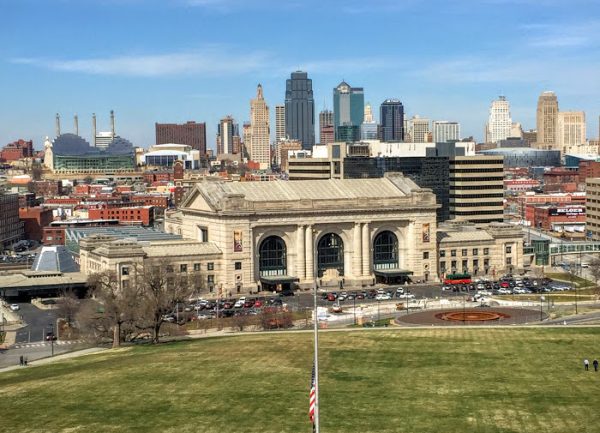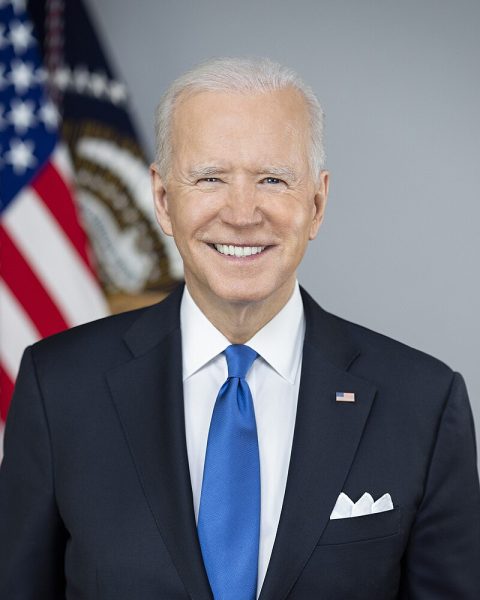Tensions escalate between Iran and US
A group of Iranian protestors burned the American flag in 2017 as part of a demonstration marking the anniversary of the 1979 takeover of the American Embassy.
In the past few weeks, tensions have escalated significantly between Iran and the United States, beginning with the attack of an American embassy on Dec. 31.
However, souring relations between the U.S. and Iran can be traced back to 1953, when the CIA orchestrated a coup of Prime Minister Mohammad Mosaddegh, the democratically-elected leader of Iran (CNN). Both the U.S. and Great Britain saw Mosaddegh’s nationalization of oil fields as detrimental and reinstated Shah Mohammad Reza Pahlavi. The incident caused many Iranians to develop anti-American sentiments due to foreign interference in national politics.
Several events, including the development of Iran’s intelligence agency (SAVAK), nuclear cooperation between the two nations under the “Atoms for Peace” program, the 1979 Iranian Revolution and hostage crisis, the 1980 Iran-Iraq war and Contra affair, the fall of Iran Air Flight 655 and Bush’s labeling of Iran as part of the “Axis of Evil” caused diplomatic ties to worsen and rivalrous sentiments to grow.
A sudden intensification of hostilities occurred when Donald Trump became president as he signed an executive order banning citizens of several Muslim-majority countries from entering the United States. In response, Iran conducted a ballistic missile test, putting the Iran nuclear deal in jeopardy.
In May 2018, Trump withdrew from the nuclear deal that had started in 2015 under the Obama administration. Trump caused an economic recession in Iran by re-imposing strict sanctions.
In 2019, several attacks in the Middle East were caused by Iran. After the U.S. classified Iran’s Revolutionary Guard Corps as a terrorist group, a couple of oil tankers were seized near the Strait of Hormuz. An American drone was shot down over the body of water as well. According to U.S. officials, Iran is also responsible for an attack on Aramco in September and a rocket attack in December (Fox News).
Dec. 31, 2019
On New Year’s Eve, protesters in Iraq stormed an American embassy in Baghdad. Iraqi security forces apparently allowed hundreds of demonstrators to enter the Green Zone, after which protesters lit fires, battered down glass windows and doors and hurled bricks and stones (The Guardian). Diplomats were trapped inside the building and U.S. soldiers used tear gas against the protesters, who chanted “Death to America.” Some of the protestors were officers of the Iranian-backed Asa’ib Ahl al-Haq militia.
Trump blamed Iran for the attack on social media. “Iran killed an American contractor, wounding many. We strongly responded, and always will,” he tweeted. “Now Iran is orchestrating an attack on the US Embassy in Iraq. They will be held fully responsible.”
Jan. 3, 2020
General Qasem Soleimani, commander of the Quds Force of the Revolutionary Guard Corps, was killed by a U.S. drone strike near the Baghdad International Airport along with nine others. Soleimani had exited a flight and entered one of two vehicles as part of a convoy. As the cars traveled on Baghdad Airport Road, the convoy was barraged by a series of missiles. Soleimani’s body was identified using a ring that he wore on his finger (Associated Press).
Trump authorized the killing of Soleimani to prevent future involvement in the deaths of any American and based on his previous records from an evaluation by the Pentagon (NBC). The legality of this action is a topic of debate.
Jan. 8, 2020
Iran carried out a missile strike on the Ain al-Asad air base in the Al Anbar Governorate and another air base in Iraqi Kurdistan (Reuters). This came after leaders promised severe retaliation in response to the death of Gen. Soleimani. Although no Americans were killed, 11 troops were treated for concussion-like symptoms. U.S. officials estimated that fifteen short-range missiles had been launched.
Additionally, Ukraine International Airlines Flight 752 was shot down immediately after takeoff from the Tehran Imam Khomeini International Airport. 176 people were killed in the crash (The Telegraph). Although Iran initially denied the usage of a missile, it was revealed on Jan. 11 that the Revolutionary Guard Corps had misjudged the passenger aircraft as a cruise missile (BBC).
Jan. 10, 2020
Trump issued Executive Order 13902, “Imposing Sanctions With Respect to Additional Sectors of Iran” (U.S. Department of the Treasury). The new sanctions target the mining, textiles and manufacturing sectors of the Iranian economy.
The previous events are new additions to what has been called the 2019-2020 Persian Gulf crisis. As tensions cool, Esmail Qaani has been appointed as the new commander of the Quds Force. New details continue to emerge about the events as well, including an unsuccessful attempt to kill another Iranian official in Yemen.
As discussion continues over the crisis, anti-government protests plague Iraq and Iran, and as the 2020 presidential election approaches, upcoming changes in the political sphere may influence American relations with the Middle East.
Editor’s note: This story originally was published in Volume 106, Issue 9 of The Guilfordian on Jan. 24, 2020.











